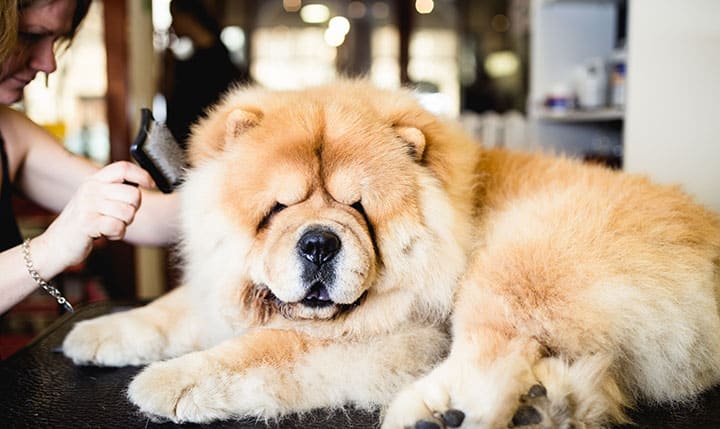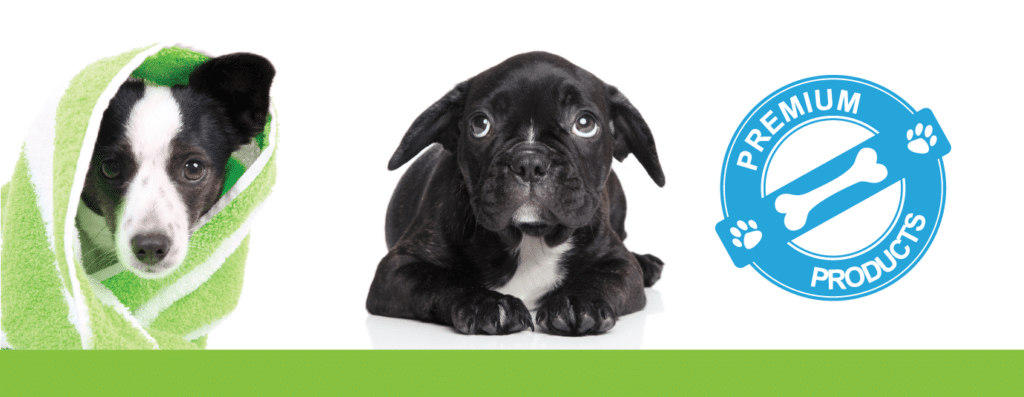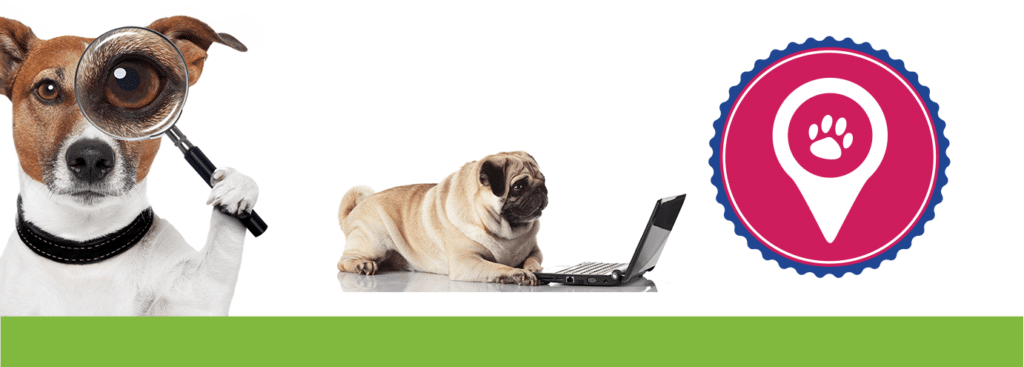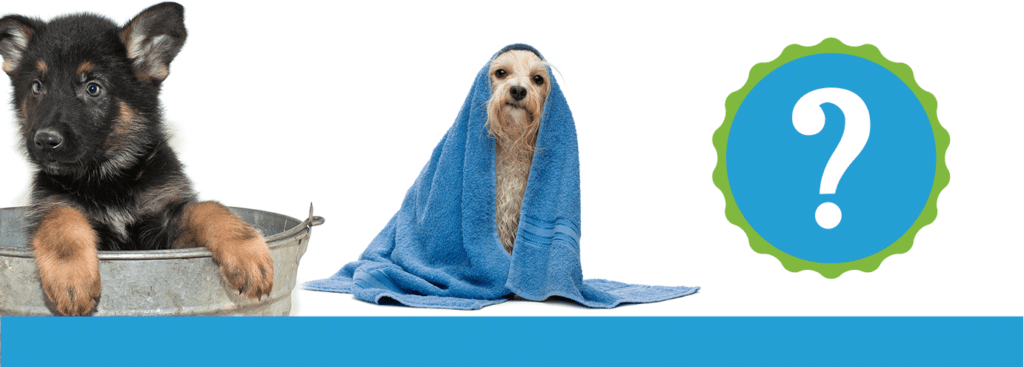Of the ASPCA estimated 78 million dogs owned in the United States, about one-third of these guys are senior dogs. For dogs, aging into the golden years looks similar to human aging. Some dogs stay active and spry-minded while others become arthritic and senile. This is just the natural process of growing older. We loved them from puppyhood through becoming a senior so their care should never diminish.
Should Senior dogs still see the groomer? The answer is unabatedly yes! Grooming is essential throughout a dog\’s whole life but can be especially important as a dog gets older. A grooming session is the best time to note any changes in a dog\’s health. Daily grooming routines transition into recognizing health issues your dog may be facing. Often, underlying health issues are revealed through the state of the skin and coat. Coats can begin thinning, and skin irritations, growths, or lumps begin to appear. Senior dogs are also susceptible to arthritis, joint issues, and dementia. Depending on the dog, some dogs gain extra weight due to lack of mobility. Others may lose weight and begin to look emaciated.
Your senior dogs can look and feel their best by maintaining their proper grooming routines!
The relationship between a groomer and their doggie clientele is special. Many Splash and Dash groomers began working with dogs starting as puppies and watched them grow over the years. Grooming older dogs can be a tedious chore. Stiff-jointed or overweight dogs may have a hard time standing. Sometimes, pet owners have neglected their dog\’s coat and severe matting occurs because they were too scared to keep brushing—thinking they might put their dog in pain. Matting is exponentially more painful for a dog than a healthy coat brushing. Also, senior dogs have those senior moments where they might nip at their owner or groomer, displaying objections. Sometimes it\’s cranky old man syndrome, sometimes it\’s canine cognitive dysfunction.
Grooming Maintains Comfort
Typically senior dogs who come in for their grooming resist the process—even when they have been groomed here their whole life. Groomers will take the time to ensure a dog\’s safety and do everything possible to make the experience enjoyable. Still, the geriatric dogs squirm and bark. Almost every time we go through this we get a call from their owners saying their dog went home prancing like a puppy.
Older dogs truly appreciate the effects of grooming. A good bath will relieve those itchy areas they can no longer reach. Senior dogs also welcome the extra attention they get, sometimes during their grooming and always afterward. It\’s a beautiful sight to watch a freshly groomed old guy swagger away refreshed. Dogs know they look good and they appreciate it when their parents fuss over them. No one\’s too old to be pampered!
Hair Brushing
First, you will want to inspect your brush and combs to make sure they are in good condition. If your brushes teeth are damaged or bent it\’s time to get a new one. Bent teeth can scratch a dog\’s skin and damage a coat causing breakage. Older dogs will need a softer, gentler, brush. In old age, dogs lose skin elasticity and brushing will need to be done slow and delicate.
Arthritis and joint pain can also inhibit a dog\’s mobility. Sometimes they won\’t be able to stand for long or will need to lay on their side while being brushed. This is fine. Have your dog lay on the side you are not brushing and then switch when they are comfortable. Matted, tangled hair does not insulate a pet as effectively as clean tangle-free hair will.
Just as groomers are, be on the lookout for any abnormal coat-loss patterns that have appeared. Also feel around for bumps, lumps, sores, or warts that have raised on your dog\’s skin. Signs of aging like this could merit a trip to a veterinarian so be mindful while you brush your dog.
Bathing
We advise that you take your senior dog to a professional groomer who have the resources, equipment, and training to accommodate for any dog. But if you prefer washing your dog at home there are some things you can do to safeguard your dog\’s well-being.
If you are using a tub or sink, make sure there is a no-slip mat that will secure their footing. If you give your dog a bath outside with hose water, make sure the water is a warm temperature and the weather is warm enough to have a wet dog outside. Dogs should never be shivering during a bath, especially the old guys. Many geriatric dogs will need a medicated shampoo for skin conditions. Speak with your veterinarian to find the most suitable shampoo for your dog. Always use a mild non-abrasive dog shampoo that will cleanse your dog\’s coat. Soak, massage, rinse, repeat. When it comes to dogs, you can never do too much rinsing.
After a bath, take a few warm towels to absorb as much water as you can. Let them shake out the remainder before using a blow dryer. Never put a blow dryer set on hot. If your blow dryer has a cool setting, this is the best. Splash and Dash use blow drying sparingly and all blowers are equipped with non-heat air flow.
Nail Trimming
Older dogs will need their nails trimmed more often than their younger counterparts. Healthy nail lengths are important for dog\’s who are already arthritic or have joint problems. Nails affect a dog\’s posture and nails that are too long will force a dog to torque their spine or develop a compensatory posture. This will lead to trouble climbing up steps or getting into the car.
If you can hear your dog\’s nail clicking on the ground, they are too long. During their younger years, those long walks on sidewalks naturally filed nails down. Now, with their shorter-golden walks, they need some extra help keeping nails trimmed.
Also, if you begin to see your dog sliding around on the floor, check to see if they have fur growing between their toes or paws. Trimming this hair back will help them regain traction.
Eye & Ear Health
Have your groomer inspect your dog\’s eyes each time they go in for grooming. At Splash and Dash, groomers will always conduct wellness checks with your doggo as they work.
If any gunk or debris is collected in the corner of a dog\’s eye this needs to be wiped away. Take a cloth, or gauze pad, soaked in warm water and gently soak the area, then wipe away the build-up from your dog\’s eye.
Make sure there is no discharge or odor coming from your dog\’s ears. This could be a viral or yeast infection.
Teeth Brushing
Keeping up with a dog\’s oral hygiene is important their entire life. Regular brushing could mean the difference between a healthy smile and cracking teeth or gingivitis as a senior dog. An overabundance of bacteria in the mouth (flora) can also secrete into internal organs causing kidney disease. Getting rid of plaque and tartar on a dog is easier in the younger years but a senior dog can still have fresh breath.
Sanitary Areas
The glands and the groin area are spots dogs clean themselves but with old age, they might need some help. Regular trimming to the groin area will help avoid any urine or feces getting trapped. All dogs express their anal glands as they defecate but senior dogs may need to have a groomer or veterinarian express the glands for them.
Where Can You Take Your Senior Dogs?
Not every grooming salon has the capabilities to handle a geriatric dog. If you don\’t already take your dog to a reputable groomer, finding the right pet salon for you is important.
Splash and Dash Groomerie & Boutique are more than happy to pamper your old man with lavish spa treatments that will make him look and feel younger!
Follow Splash and Dash Groomerie & Boutique:
- Website: http://splashanddashfordogs.com/
- Website: https://splashanddashfranchise.com/
- Facebook: https://www.facebook.com/splashanddashfordogs/
- Instagram: @splashanddashfordogs



